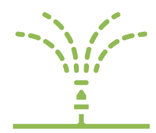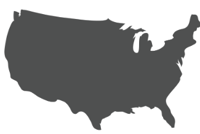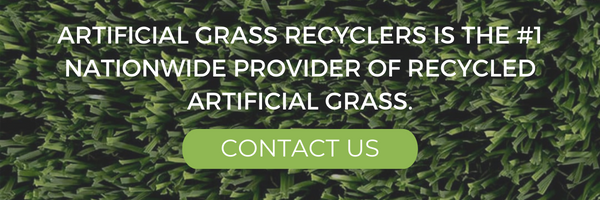Since 2012, the price of residential water in the United States has increased at an average rate of 5.5% per year, outpacing inflation and the costs of goods such as gasoline and food. As a result, monthly bills for residential water use have risen by 43% on average over the past decade.
To put this in context, residents in San Diego should anticipate an 18% increase in water rates over the next two years. This underscores the importance of knowing the actual cost of watering your lawn.
What is a lawn's average water usage?
To ensure that an established lawn thrives, you should water the ground until the top 6 to 8 inches of soil becomes saturated.
Most lawns require 1 to 1.5 inches of water per week from rainfall or irrigation to reach this depth. Covering one square foot of lawn with one inch of water requires approximately 0.623 gallons.
That means every 10x10 area demands over 62 gallons.

What can increase your water bill above the average?
Type of Grass
 Two types of grass are commonly used for residential lawns - Cool Season grasses and Warm Season grasses. Cool Season grasses can withstand colder temperatures and will go dormant in hot, dry weather. Examples of this type of grass include Ryegrass, Fine and Tall Fescue, Creeping Bentgrass, and Kentucky Bluegrass.
Two types of grass are commonly used for residential lawns - Cool Season grasses and Warm Season grasses. Cool Season grasses can withstand colder temperatures and will go dormant in hot, dry weather. Examples of this type of grass include Ryegrass, Fine and Tall Fescue, Creeping Bentgrass, and Kentucky Bluegrass.
On the other hand, Warm Season grasses thrive in warmer climates, such as the southern regions of the U.S. They experience the most growth during the warmest part of the year. These types of turfgrass often require less water than Cool Season grasses. Examples include Bermuda grass, Zoysia grass, St. Augustine grass, Bahia grass, Buffalo grass, and Centipede grass.
Type of Irrigation System
 Are sprinklers a waste of water? The truth is that sprinkler irrigation systems are not as efficient at water conservation as they may first appear. The typical water consumption for a residential sprinkler system ranges from 12 to 30 gallons per minute, depending on the sprinkler head's size and type. Operating the sprinkler for 30 minutes a day, 15 days a month, can lead to a consumption of up to 450 gallons per month.
Are sprinklers a waste of water? The truth is that sprinkler irrigation systems are not as efficient at water conservation as they may first appear. The typical water consumption for a residential sprinkler system ranges from 12 to 30 gallons per minute, depending on the sprinkler head's size and type. Operating the sprinkler for 30 minutes a day, 15 days a month, can lead to a consumption of up to 450 gallons per month.
Inadequate water pressure and strong winds can cause significant water loss due to drift or evaporation.
Rate Type
Understanding your monthly water bill is the first step to determining the costs of watering your lawn. The bill measures your water usage using various standard units of consumption, the most common being centum cubic feet (CCF) and gallons, where 1 CCF equals 748 gallons.
The local water utility employs a range of rate structures to bill its customers, including:
- Uniform Rate structure: Charges a constant per-unit price for all metered units of water consumed throughout the year.
- Increasing Block Rates: Charges higher unit rates for each succeeding block of usage than the previous block(s).
- Seasonal Rates: Established to promote conservation during peak usage periods and cover a specific time frame.
- Drought Rates: Similar to Seasonal Rates, these rates depend on the level of drought in the local area, rather than applying higher rates throughout a particular period.
All these rate structures can substantially increase water bills if you regularly water your lawn.
Location
 The cost of utilities, which includes water bills, can vary significantly by state.
The cost of utilities, which includes water bills, can vary significantly by state.
In 2019, an average family of four in the United States used about 100 gallons of water daily and paid an average of $72.93 for their monthly water bill.
According to data collected by the World Population Review, the states with the lowest average water costs are Florida, where the average cost of a water bill is $6, followed by Wisconsin and Vermont, with average water costs of $18.
On the other hand, the ten states with the most expensive average water bills are:
- West Virginia at $91
- California at $77
- Oregon at $76
- Washington at $75
- New Jersey at $72
- Connecticut at $69
- Alaska at $68
- Arizona at $64
- Hawaii at $64
- Wyoming at $53.
Note that this is per month. To get annual costs, multiply the water bill by twelve. For example, the average water bill in West Virginia costs $1,092 each year.
According to a study conducted by NASA and the National Oceanic and Atmospheric Administration, keeping the front lawn grass green and healthy can consume up to 75% of a household's water usage.
That means that watering your lawn can cost up to $819 per year.
Over five years, the cost of watering your lawn can reach as high as $4,095.
Reduce the Cost of Lawn Care with Artificial Grass
You can save save money on water bills by opting for artificial grass for your lawn. Unlike natural lawns, synthetic grass doesn't require constant watering to maintain its green appearance. It only requires an occasional hosing once every one to three months. If you let your pets go to the bathroom on your artificial lawn, you’ll have to hose it off more regularly.
Beyond saving money, you also can worry less about the variability and uncertainty that comes with larger water bills.
Properly installed artificial grass can last 10 to 20 years, depending on the quality.
Compare that to how much you'll spend on 10 to 20 years of watering your lawn.
If price is still an issue, you can always opt for used artificial grass that costs 50%-75% less than new artificial turf. If you are an experienced DIYer, you can save even more by installing the artificial turf yourself.
Mar 14, 2023 9:09:24 AM


